Football and regeneration

Tibbalds
I am a Liverpool fan (just putting it out there), and so was intrigued by the approach my beloved club took when recently expanding their capacity. Liverpool extended their Main Stand during the season, and generated lots of interest from other clubs considering the same. It was an unusual approach in the footballing world, where many clubs are choosing to develop (or re-develop) their stadiums. The changed view from the Dock Road looking up to Stanley Park is dominated by the extension of the stand and gives the club a real architectural presence in the city. Further extensions to the other stands are being investigated.
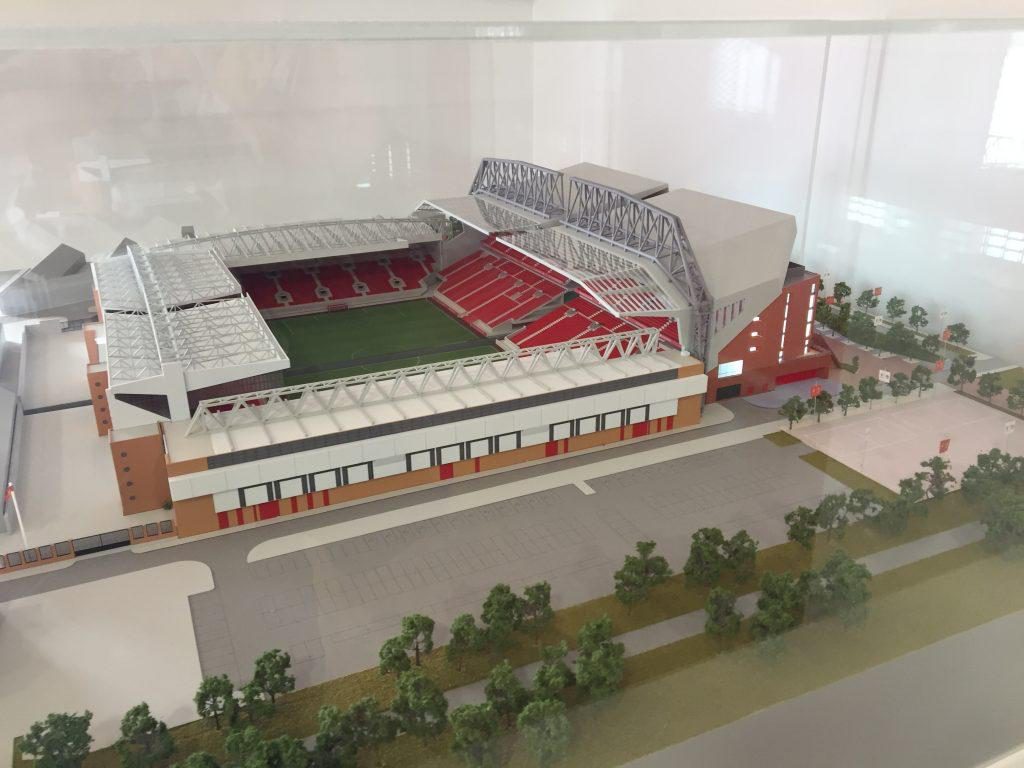
Stadium development model, Anfield
The stadium development is part of a wider £260m Anfield regeneration, which includes the refurbishment of the high street next to the stadium itself. More than 300 Victorian terraces have been refurbished, with a further 170 homes under construction. The framework also included improvement works to Stanley Park, which separates Everton and Liverpool football clubs. Through development, the neighbourhood has benefited from refurbishment of the community and leisure centres, a new health centre and school. The next stage is wider improvements to the high street outside the stadium, including new shops, commerce and homes. There are further plans to create a wider, tree-lined pavement with areas which could accommodate temporary markets or retail units and community events.
In 1913, Arsenal moved from Woolwich to take up residence in Highbury. This must have been sacrilege at the time of their move; most of my mates who are from north London rarely venture south of the river. More recently, Arsenal were one of the first clubs to look at stadium led regeneration. They stayed at Highbury until 2006, when they moved just up the road to Ashburton Grove (later the ‘Emirates Stadium’). I watched the redevelopment of the old ground at Highbury with much interest, particularly to see how the design would respond to the listed art deco parts of the old stadium. Highbury is now 650 homes, and has been criticised for its exclusivity.
I am sure that, at the time of the move, the wrench that the Arsenal faithful felt moving from Highbury would’ve been a tough one to take. I have been to the Emirates a couple of times and was impressed by the stadium – it is modern and more fitting for the club.
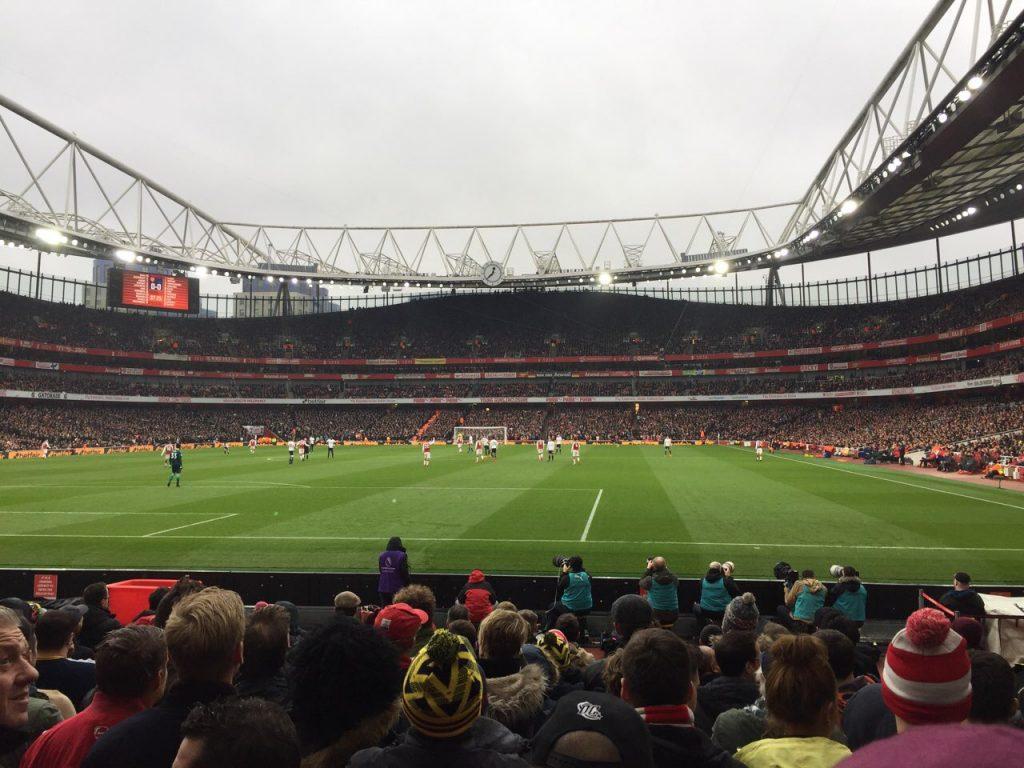
The view from the stands, Emirates Stadium
The move itself was not an easy one, with much opposition and discussion around the use of compulsory purchase orders, relocation of the refuge centre and other community benefits. The presence of the stadium still causes some problems for the community; I am sure, for instance, that residents did not appreciate 20,000 1.FC Koln fans – many without tickets – blocking the roads and tying up resources before a game in September 2017. However, LB Islington did secure many community benefits from the stadium development through agreements, including new homes, station improvements, a community development fund and priority season tickets for locals.
West Ham have also relocated. Those who love football are still slightly perplexed by deal (The Guardian, called it ‘the deal of the century’, and reported a £752m pound conversion of the Olympic Stadium for football, largely footed by the taxpayer[1]). I have visited the London Stadium twice; once for the Rugby World Cup and the other to see Guns ‘n’ Roses. I remember a West Ham season ticket holder, sitting in front of me whilst watching the All Blacks, moaning about the lack of soul and that he couldn’t see it working as a football stadium. At the time, I thought, ‘What is he talking about; this is an impressive stadium and you’re getting a great deal on this’.
West Ham’s first season was blighted by fan trouble. It felt like a return to the 1980’s seeing fans fighting in the stands. The ‘curse’ of moving to a new stadium was also seen in the results on the pitch. Ultimately, that fan was right; the stadium had not been set up for football and West Ham still need to rectify this.
One of the key agendas of the Olympics was to create a legacy for east London. The legacy is hotly debated – has this worked? I am still to be convinced by the impact of the Hammers taking the stadium. It also seems a strange walk from Stratford through Westfield shopping centre to a football game and most bars in there don’t allow football colours on match days (which is not that unusual). It feels that this segregation restricts local businesses wishing to benefit from the influx of people into the area, but mixing shoppers with football fans might not be an easy fit for some.
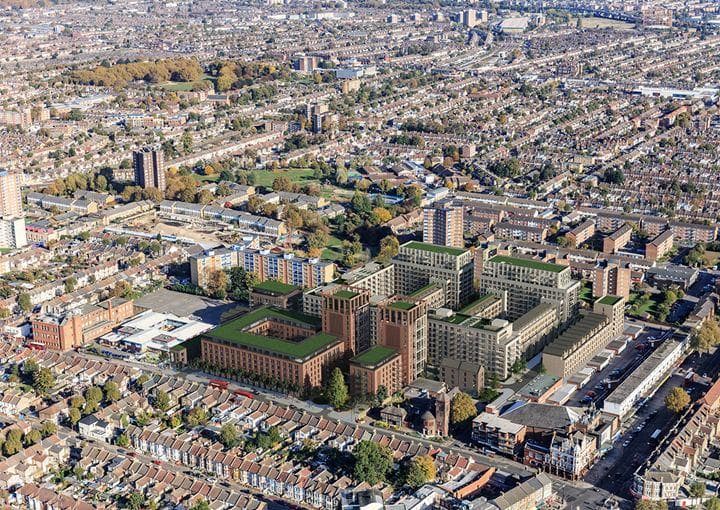
The scheme at West Ham’s former ground at the Boleyn Ground.
Their former home, Upton Park, is being developed by Barratt Homes into 842 homes. Newham Council have purchased 211 of these as part of their new affordable housing company, offering homes at varying levels of rents. The Upton Park development has sparked protests from local pressure group, Focus 15, who are campaigning for more social housing. Some local news reports suggest that businesses in the area have suffered since the move. I hope that the influx of new homes will boast businesses, but doubt that it will make up for the decrease in footfall.
We are currently working with LB Haringey on a strategy for Tottenham High Road, so my interest in stadium development – this time, White Hart Lane – has been piqued once more. I admire Spurs, as a football club, for the way they have been building their new stadium. They took a hit with revenues last season by taking out a stand and starting the build. Also, the temporary move to Wembley hasn’t been the smoothest, after last season’s disaster in Europe, but they seem to have finally broken that this season.
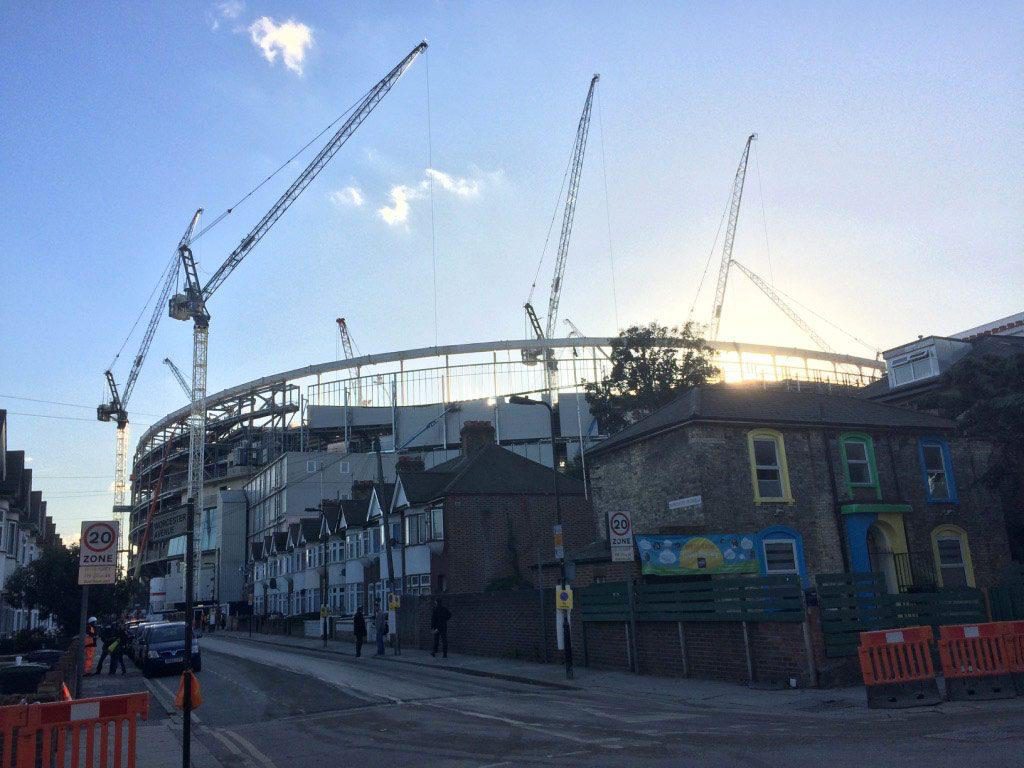
Tottenham Hotspur’s new stadium from Northumberland Park, November 2017
Again, there has been controversy about the stadium. The CPO’s and the benefits coming to the community is a huge issue, with rumblings about development benefiting the football club and little consideration given to the community. Having spoken to the Safer Neighbourhood Team at some length, they have benefited from the move to Wembley for this season in reduced incidents in the area. However, the vision for the stadium is that it will be an entertainment/leisure destination in north London. The impact of an additional thirty thousand supporters attending concerts and American Football on top of the regular football will be a great asset to the club, but the impact on the wider area, and those Safer Neighbourhood officers, I am a little less confident on.
Football clubs’ developments are coming through thick and fast now with the increase in money from uber-rich owners and lucrative sponsorship deals. There is much more to be learnt in the development of a stadium and the wider benefits for the football club, the fans and the wider community. I will continue to watch with interest as other clubs – such as Everton, Luton, Southend and Chelsea – develop their stadiums.
To be continued……..
[1] https://www.theguardian.com/sport/blog/2016/nov/02/west-ham-olympic-stadium-deal-explained-london-mayor-sadiq-khan and https://www.theguardian.com/football/2016/apr/14/west-ham-deal-century-olympic-stadium)
Related Updates
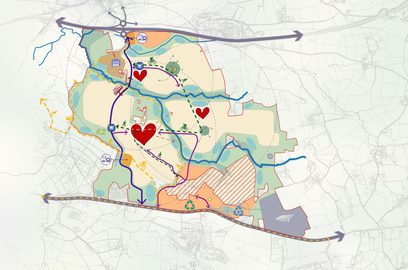
Marlcombe, East Devon selected as one of the New Towns

Tibbalds

Lizzie Le Mare attending LREF 2025

Tibbalds
Newham Council’s 50% affordable Carpenters Estate regeneration gets underway

Tibbalds
Stay In Touch
Sign up to our Newsletter
Subscribe to our newsletter to receive updates about making people friendly places.